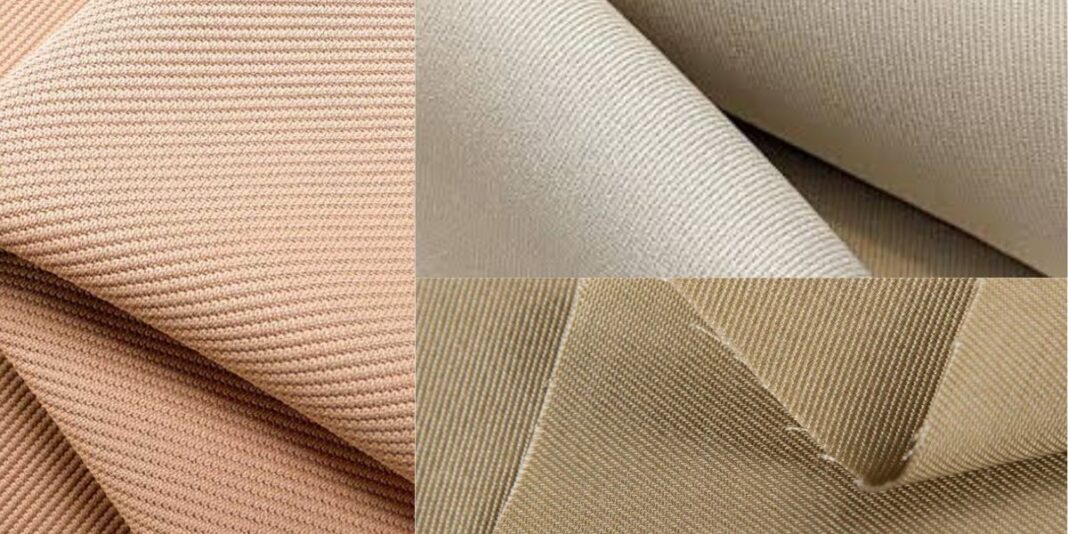The Basics: Which One is Twill Fabrics?
Twill fabric is a type of woven textile that is known to be very strong and stylish, making it standout among the rest. Twill fabric is woven with a unique diagonal pattern. This article will discuss the history, important features, common uses, and upkeep required for twill fabrics. Whether you are a fashion lover, interior decor understander or even someone fascinated by fabrics, this guide will expand your knowledge of this fabric. Why is twill fabric so famous? The answer is waiting for you.
Table of contents
- The Basics: Which One is Twill Fabrics?
- The History of Twill Fabric
- Characteristics of Twill Fabric
- Types of Twill Fabric
- How Twill Fabric is Made
- Benefits of Twill Fabric
- Popular Uses of Twill Fabric
- How To Clean Twill Fabrics
- Twill Fabric vs. Other Fabrics
- Sustainable Aspects of Twill Fabrics
- Conclusion
- FAQs
The History of Twill Fabric
For years, many different civilizations have adopted twill fabric: its uses our still very common throughout the world today. Weavers from Ancient civilizations began adopting this fabric owing to its strength and longevity. The world did eventually become familiar with its uses in fashion, home decorations, and industrial goods.
The first known use of twill fabric comes from ancient China, which had silk twill worn for decoration and garments. Ancient Egyptians, too, had the twill patterns in their linen fabric. The twill fabric made its way to Europe through trade where it quickly became popular for making clothing and military uniforms. With the Industrial Revolution came improvements in the production of this fabric, which made it cheaper and easier to obtain for the general public.
Characteristics of Twill Fabric
What Is Twill fabrics and what makes it special? Twill fabric has a variety of unique characteristics. It bears a diagonal weave pattern making its structure textured and sturdy. Moreover, twill fabric is moisture absorbent, has a good drape, does not iron easily, and does not require much care. Because of these properties, it is a good option for different purposes.
Strength And Longevity
Twill fabric is known for a number of features, one of which is remarkable strength. Thanks to the diagonal weave, it has a high degree of resistance to wear and damage. Twill fabrics are wonderful for workwear, jeans, and even upholstery.
Resistance to Wrinkles
Unlike other fabrics with a plain weave twill fabrics are wrinkle free, making them a good option for clothing that must look neat. This trait is particularly helpful for business apparel as well as the decor of the house.
Surface and Texture
Twill fabrics have a distinct diagonal weave, creating patterns that look deep and detailed. Other forms, including houndstooth and herringbone, make the pattern even more striking.
Types of Twill Fabric
So, what is twill fabrics and what types are there? This fabric has several different types, and each type has its own special characteristics. Here are a few common types of twill fabric:
Denim : Primarily used in jeans and jackets.
Gabardine : Very tightly woven twill that is used in the making of suits and uniforms.
Chino : Lightweight twill fabrics mainly used for trousers and shorts.
Herringbone : A zigzag version of twill, herringbone is used mainly in the making of suits and coats.
Twill Silk : A luxurious twill fabric type used in making ties and scarves.
Drill Twill : A heavy twill drill used for work clothing and other industrial purposes.
Serge : A fine wool twill used in the making of most military and formal clothing.
Every type of twill fabric has different advantages so it can be used in a whole range of things.
How Twill Fabric is Made
What is twill fabric, and how is it made? Twill fabrics are manufactured using a specific type of weaving called twill weaving. The weft thread goes over and under one or more warp threads in a staggered basic pattern. So stitch by stitch, a diagonal ribbing effect is formed. The stitches along with the way it’s woven make the fabrics more durable than others, and results in stronger twill than plain-weave fabrics.
With the use of sophisticated technology, contemporary textile mills can create this fabric from various fiber blends. Weaving twill can incorporate cotton, wool, silk, and even synthetic fibers. The type of fiber used as a cloth determines the fabric’s final texture, weight and intended purpose.
Benefits of Twill Fabric
Now let’s take a look at the often-asked question, “What is twill fabrics, and what are the reasons to choose it?” The multitude of reasons to choose this fabric include:
Durability: Unlike other fabrics, twill fabric has increased resistance owing to its tight woven structure.
Wrinkle Resistance: Compared to a lot of fabrics, twill fabrics retains its shape much better.
Softness: Being quite durable, twill fabric is quite comfortable to wear.
Versatility: Able to be used in clothes, home furnishings, and even industrial products.
Stain Resistance: Twill weave fabrics tends to be better than other weaves at hiding stains due to its texture.
These features alongside many others make twill fabrics the best candidate for designers and consumers.
Popular Uses of Twill Fabric
What is twill fabrics, and what can it be used for? Twill fabric is used in fashion, home decor, and industrial applications. The most common include:
Clothing: Jeans, jackets, suits, dresses.
Home Decor: Bed linens, curtains, and upholstery.
Accessories: Ties, handbags, and scarves.
Industrial Application: Automotive upholstery, uniforms, and workwear.
Sportswear: Used by many athletic brands to create durable yet breathable clothing.
Twill fabric is commonly used in these industries because of its unique qualities.
How To Clean Twill Fabrics
What is twill fabric, and how do you care for it? Good care prolongs the life of twill fabric. Consider these suggestions:
Washing: Machine wash in warm water with mild detergent or hand wash.
Drying: Air dry or tumble dry on low.
Ironing: If necessary, iron on medium heat.
Storage: Store in a cool and dry place.
Stain Treatment: Apply mild stain remover before laundering for stubborn stains.
By following these steps, you can maintain your twill fabric’s fresh and stylish look.
Twill Fabric vs. Other Fabrics
Twill fabric is a type of fabric with a unique diagonal weave pattern. Compared to other fabrics, it is stronger and withstands wrinkles better. Twill fabrics are also less likely to snag as compared to satin weaves. These characteristics make twill fabrics a preferred option for many applications.
Sustainable Aspects of Twill Fabrics
A lot of twill fabric is made from cotton or wool which makes it twill fabrics environmentally friendly. Other manufacturers make sustainable this fabric using organic cotton or recycled materials. These types of twill fabrics sustainable and lessen the carbon footprint.
Furthermore, a lot of brands now produce eco-friendly twill fabrics with the use of sustainable dyes and methods that save water. Consumers are able to make a positive impact on the environment through responsibly sourced twill fabrics.
Conclusion
To summarize everything, twill fabric is perfect for so many purposes. Not only does it offer a stylish solution, but it’s also durable and versatile. Due to twill fabric’s diagonal weave, uplifting strength is achieved, and smoothness provides comfort. Whether used for making apparel, home furnishings, or industrial goods, twill fabric does the job. Once you learn about its traits, kinds, and care hints, you’re sure to make the most out of twill.
FAQs
Yes, twill fabric is breathable, especially when made from natural fibers like cotton or wool. It allows air circulation, making it comfortable to wear.
This fabrics may shrink slightly, especially if made from cotton. To prevent excessive shrinkage, wash it in cold water and air dry.
Denim is a type of twill fabrics made from cotton with a specific indigo dyeing process. It is heavier and more rugged than other twill fabrics.


